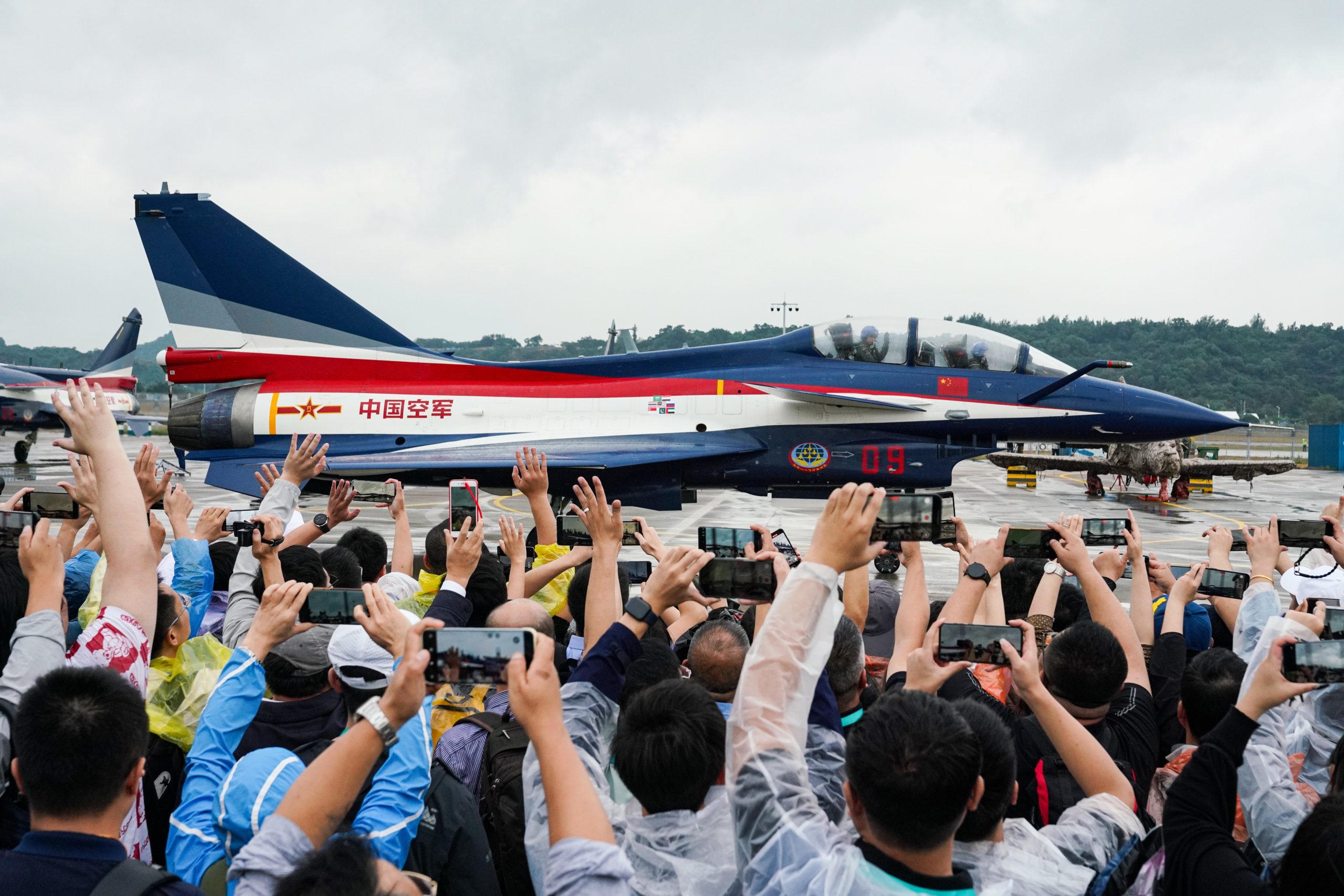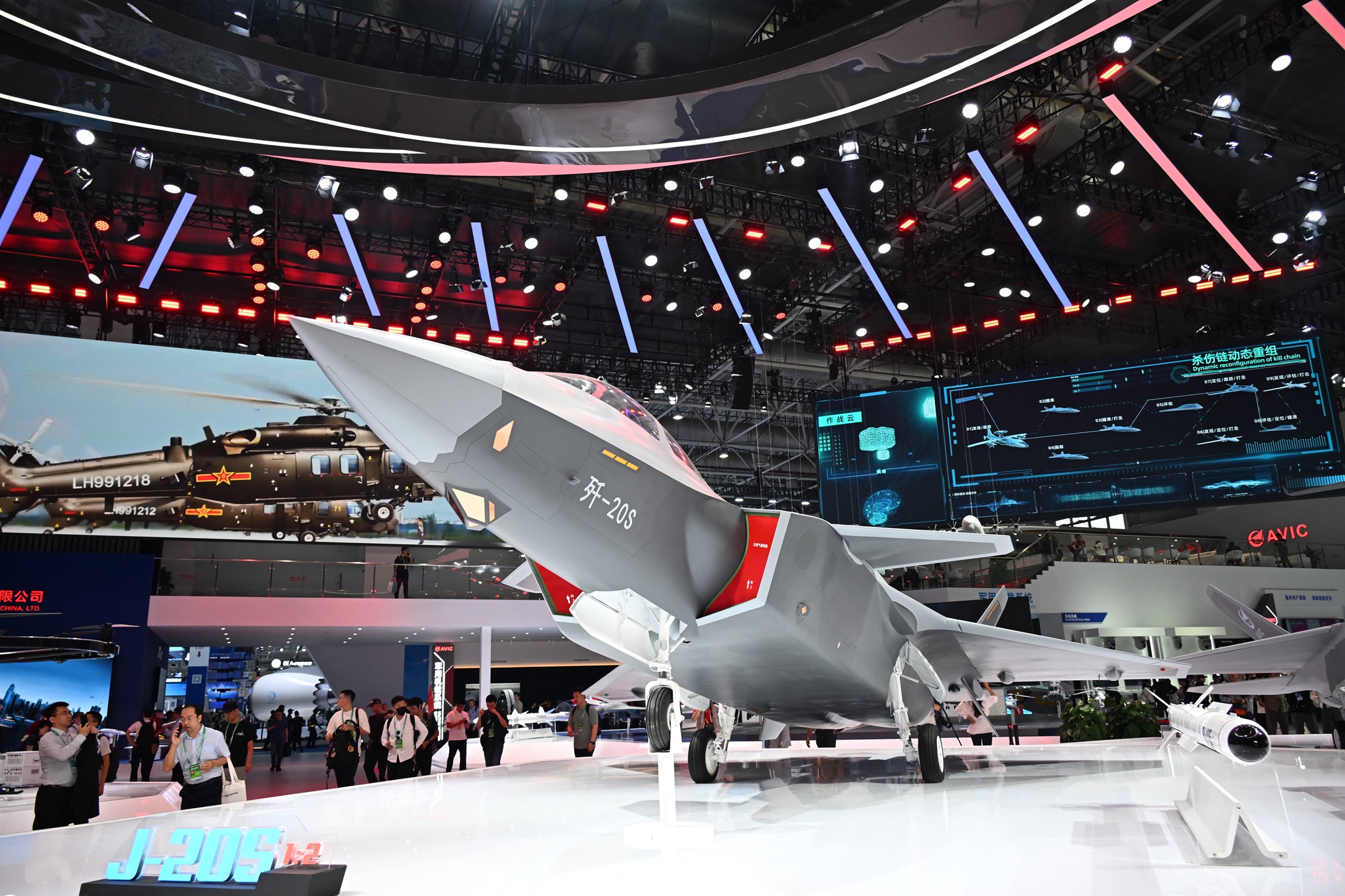Publications
INSS Insight No. 1927, December 24, 2024
The 2024 Zhuhai Airshow, the leading international aviation and aerospace event, served as a prominent platform for showcasing China’s military and technological capabilities. Held in November in southern China, this year’s exhibition set records for participation, featuring over 1,000 companies from 49 countries, underscoring China’s global ambitions. In addition to advanced weapon systems, such as directed energy weapons, autonomous robots, and stealth warplanes, the event highlighted China’s significant advancements in civilian aviation and aerospace, including the C919 airliner and ambitious space research programs.
This airshow emphasized the rapid modernization of the Chinese military and the strategy of integrating civilian and military efforts as an effective national model. China continues to position itself not only as a technologically advanced military power but also as an economic leader. By communicating messages about regional defense and responsible innovation, China aims to reshape global perception and demonstrate its technological independence from the West. The exhibition clearly illustrates China’s ambition to lead in military, outer space, and industrial sectors in the 21st century.
The China International Aviation and Aerospace Exhibition, which has been a biannual event since 1996 and an annual one in more recent years, was held this year in the city of Zhuhai in southern China. This exhibition is the largest and most significant of its kind in China and one of the largest globally. As the only such event approved by the Chinese central government, it benefits from strong support from the country’s space and defense industries. Since its inception, the exhibition has developed into a global platform for presenting innovative technologies and fostering international cooperative ventures. It reflects China’s aspirations in the global theater and demonstrates its growing dominance in aerospace and defense.
The exhibition set new records this year, hosting 1,022 companies from 49 countries and regions—an increase of 38% compared to last year’s event. It showcased China’s advancements in military, technological, and aerospace capabilities, as well as innovative civilian applications, while addressing strategic issues relevant to security and global economic growth. Although the reliability of the reports about various military innovations at the exhibition is unclear, the record demonstrates that China does not usually exaggerate its offerings.
Important Categories at the Exhibition
Chinese military advancement—The exhibition underscored the significant rise of China as a modern military power. Chinese industry leaders and government representatives showcased breakthroughs in unmanned systems, directed energy weapons, and next-generation stealth technologies. This progress reflects a concerted effort to adapt to global trends in modern warfare while maintaining a unique Chinese approach to military innovation and ambition to assume the leading role in it.
Military-civilian integration—The primary messages at the event emphasized the Chinese army’s dual role. Its power is used not only for national defense but also for social welfare and maintaining order in the country. In times of natural disaster, humanitarian crises, or terrorist incidents, the Chinese army serves as an initial response force—a role that has garnered public goodwill. The integration of military and civilian resources, particularly in medical and logistical services, as well as in technological development, was portrayed as a model for efficiency and social responsibility. This dual-purpose narrative reinforces the idea that the army is an inseparable part of the Chinese national identity, bridges the gap between its defense responsibilities and its contribution to public welfare, and highlights its role as a key tool for the regime in maintaining governmental order.
Effect on global concepts—China also utilized the exhibition as a platform to address Western skepticism about its intentions. The exhibition framed China’s military expansion as focused on defending the country’s national sovereignty and contributing to regional stability, rather than as a pursuit of global hegemony. The official Chinese theme emphasized the country’s image as a peaceful nation driven by innovation within a complex world order, while also highlighting China’s ties with the Global South, including potential military cooperation. This rhetoric sought to position China as a responsible global player eager to cooperate with foreign nations, while rejecting portrayals of its growth as a mounting threat to global security.
The economic contributions of the aviation and defense industries—The economic influence of the Chinese aerospace industry was another critical topic. With investments in research and development, this sector has become a national growth engine and a showcase for China’s technological capabilities. This development, which reflects Chinese aspirations to challenge Western aviation giants such as Boeing and Airbus, marks an important milestone in the country’s industrial progress.
What Was Displayed During the Exhibition
Prominent advanced military systems displayed included:
- Directed energy weapons systems—The HPM 3000 system, based on high-intensity microwave radiation, can jam UAVs, communications systems, and radar. This technology gives China a significant advantage in electronic warfare, allowing it to effectively neutralize air threats. Also on display was the FK-4000 system for ranges up to three km, designed primarily against drones, including multi-rotor types. Western countries are developing similar systems, but China has shown considerable progress in this area.
- Autonomous systems—The autonomous robot “wolf,” equipped with various sensors, thermal cameras, and advanced weapons systems, can independently perform patrol, attack, and destroy missions. This robot exemplifies the integration of artificial intelligence, robotics, and weapons systems, positioning China at the forefront of autonomous weapons systems development. The exhibition also featured autonomous naval and air systems, including unmanned vessels and aircraft that can autonomously launch and carry smaller weapons. Western countries are developing similar systems, but China has demonstrated advanced capabilities in this field.
- Advanced unmanned aerial vehicles (UAVs)—Long-range suicide attack drones capable of carrying heavy loads represent a conceptual shift in modern warfare, based on smaller, flexible air forces. These drones can strike specific targets with great accuracy, posing a significant threat to air defense systems. While many countries are developing similar drones, China showcased a wide range of platforms and weapons integrated into them.
- Advanced warplanes—The new two-seat version of the renowned J-20S Chinese stealth aircraft was unveiled, along with the J-35A stealth aircraft, which appears to be designated for export (another model intended for aircraft carriers was not displayed). The J-35, which competes directly with the American F-35 and the Russian Su-57, features advanced electronic systems, powerful engines, and stealth capabilities. This aircraft positions China at the forefront of 5G warplane development, enabling the country to compete in markets previously closed to it. Potential customers in the Middle East include Saudi Arabia, the United Arab Emirates, and even Egypt.

- Experimental technologies—The display of military triplanes indicates an innovative approach aimed at developing warplanes with extraordinary maneuverability and the capacity to carry heavy loads. These technologies are likely to transform future air warfare and provide China with substantial technological advantage.
Aviation and Aerospace Innovation
In addition to advanced military systems, the 2024 Zhuhai Airshow showcased China’s civilian and aerospace aspirations. The country’s impressive technological progress in these areas was emphasized, indicating plans to become a major player in the global aviation and aerospace industries. The prominent projects displayed at the exhibition included:
- The C919 airliner—The development of the C919 airliner by the Commercial Aircraft Corporation of China (COMAC) marks a significant milestone in China’s civilian aviation industry. This aircraft, which competes directly with models produced by Boeing and Airbus, is equipped with cutting-edge technologies and avionics systems. It signals China’s objective of reducing its dependence on Western suppliers and becoming a major player in the global commercial aviation market, even though the airplane also integrates critical technologies from the West.
- Space exploration—The space shuttle model displayed at the exhibition reflects China’s increasing investments in its manned spacecraft program, along with its ambition to achieve substantial advancements in space exploration, such as upgrading its space station, building additional and more complex stations, and carrying out scientific research missions in outer space (which the West believes may also have possible military implications).
- Flying cars—The flying car developed by Xpeng, based on advanced battery technologies, electric engines, and autonomous navigational systems, demonstrates China’s potential for creating innovative and effective transportation solutions. In the near future, these technologies are likely to transform urban transportation.
The Strength of the Chinese Military Industry
In addition to advanced weapons systems, the exhibition also showcased various conventional military equipment, highlighting China’s prodigious industrial capabilities. China North Industries Group Corporation (Norinco), a leading company in the Chinese defense industry, played a key role in the exhibition, displaying a wide range of tanks, armored fighting vehicles (AFVs), self-propelled artillery, and air defense systems, a significant portion of which are unmanned. These systems are equipped with advanced technologies such as automated fire control systems, enhanced armor, and sophisticated sensors, demonstrating China’s capacity to produce modern weapons systems that can compete with Western systems.
Conclusion
The 2024 Zhuhai Airshow provided a clear view of China’s military and technological strategy. Beyond showcasing technological innovations, the exhibition served as a platform to declare China’s global ambitions and determination to reshape the world order. The strategic consequences of the exhibition are all-encompassing:
- Accelerated military modernization—The emphasis on unmanned systems, directed energy weapon systems, and stealth platforms demonstrates a strong commitment to upgrading China’s military capabilities and preparing for a wide range of conflict scenarios.
- Technological independence—The C919 airliner and the Chinese aerospace investments underscore China’s determination to decrease its reliance on Western technology. This will enhance its status in the global theater and reduce its vulnerability to sanctions from other countries.
- Expanding China’s sphere of influence—The investments in aerospace technologies reflect China’s ambitions to extend its sphere of influence into outer space and compete with the United States for dominance in this critical strategic sphere in the 21st
The key message conveyed at the exhibition is that China is not a passive player in the international arena; it is an active and proactive one that seeks to establish a new global order. Its significant investments in technology, combined with a sophisticated strategy, are positioning China to influence the global dynamic across various spheres, from national security to economics.



